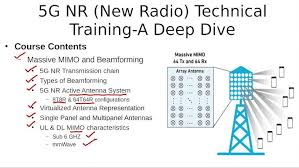What is WLCP (Wireless Local Area Network Control Plane Protocol)?
telcomatraining.com – In the ever-evolving landscape of wireless communication, a key area that has witnessed significant innovation is the Wireless Local Area Network (WLAN). As businesses and individuals increasingly rely on seamless connectivity, protocols that enhance the functionality and performance of WLANs have become vital. One such protocol is the Wireless Local Area Network Control Plane Protocol (WLCP), which plays an essential role in improving the performance and security of WLANs. This article aims to provide an in-depth understanding of WLCP and its significance in modern networking.
Introduction to WLCP
WLCP, or Wireless Local Area Network Control Plane Protocol, refers to a set of protocols used for the management and control of WLANs. These protocols govern the communication between various components within a WLAN, ensuring that data is transmitted effectively and securely across the network. The term “Control Plane” specifically refers to the part of the network responsible for routing and managing the data packets, unlike the “Data Plane,” which is directly involved in the actual transmission of data.
In a typical WLAN environment, the control plane handles tasks such as network management, security, and device authentication. The importance of WLCP stems from its role in facilitating communication between the access points (APs), clients, and other devices within the network, ensuring optimal performance and connectivity.
The Role of WLCP in WLANs
A WLAN typically consists of several access points (APs) connected to a central controller, which helps manage the network. The WLCP is responsible for the efficient coordination and management of this setup. It ensures that data flows seamlessly between the devices and the network, especially as devices move across different areas covered by different access points.
Here are some of the primary roles of WLCP in a WLAN:
- Authentication and Security: WLCP protocols help in authenticating users and devices before they can access the network. This authentication is crucial in preventing unauthorized access and ensuring the security of the network. It includes processes like encryption, access control, and intrusion detection.
- Roaming and Handover: As mobile devices move within the coverage area of different access points, WLCP protocols ensure that the handover process is smooth and that users experience minimal disruption. Roaming between access points requires precise coordination of data transfer to maintain a stable connection.
- Quality of Service (QoS): WLCP plays a key role in managing the Quality of Service, ensuring that critical applications such as voice and video receive higher priority over less sensitive data like email or web browsing. By prioritizing data packets effectively, WLCP improves overall user experience and reduces latency.
- Network Management: WLCP also contributes to network management by enabling administrators to monitor and control the network remotely. This includes managing bandwidth, controlling access to specific resources, and performing troubleshooting tasks when necessary.
- Interference Mitigation: Wireless networks are prone to interference, which can degrade performance. WLCP protocols help in mitigating interference by intelligently selecting channels, adjusting power levels, and optimizing other parameters to minimize disruptions.
Key Features of WLCP
To achieve these tasks, WLCP incorporates several features that are crucial for the effective operation of a WLAN:
- Centralized Management: WLCP protocols enable centralized management of the entire WLAN, making it easier for network administrators to monitor, configure, and troubleshoot the network from a single point.
- Scalability: WLCP protocols are designed to support the growing demands of modern WLANs, which often require the ability to scale quickly and efficiently to accommodate more devices and users.
- Interoperability: Since WLCP protocols are designed to work across different hardware and software platforms, they ensure that various devices, including smartphones, laptops, and IoT devices, can connect seamlessly to the network.
- Security Mechanisms: WLCP incorporates robust security mechanisms, such as WPA3 encryption, to ensure that the network remains protected against unauthorized access and data breaches.
WLCP vs. Other Networking Protocols
While WLCP is specifically designed for wireless networks, it often works in conjunction with other networking protocols to provide a comprehensive networking solution. For instance, it may work alongside protocols like the Internet Protocol (IP) for routing, Dynamic Host Configuration Protocol (DHCP) for IP address allocation, and Simple Network Management Protocol (SNMP) for network monitoring.
However, WLCP’s focus on wireless communication sets it apart from these other protocols. Its ability to manage the specific challenges of WLANs, such as mobility, interference, and roaming, makes it a unique and vital part of modern networking.
Conclusion
In conclusion, WLCP (Wireless Local Area Network Control Plane Protocol) plays a critical role in the operation and management of modern wireless networks. By ensuring efficient communication, security, and performance across devices and access points, it helps businesses and individuals enjoy a seamless wireless experience. As WLAN technology continues to evolve, the importance of protocols like WLCP will only continue to grow, driving innovation and enhancing connectivity in wireless networks worldwide. Whether you’re managing a small office network or a large enterprise WLAN, understanding and leveraging WLCP will help optimize your wireless infrastructure for maximum performance and reliability.







